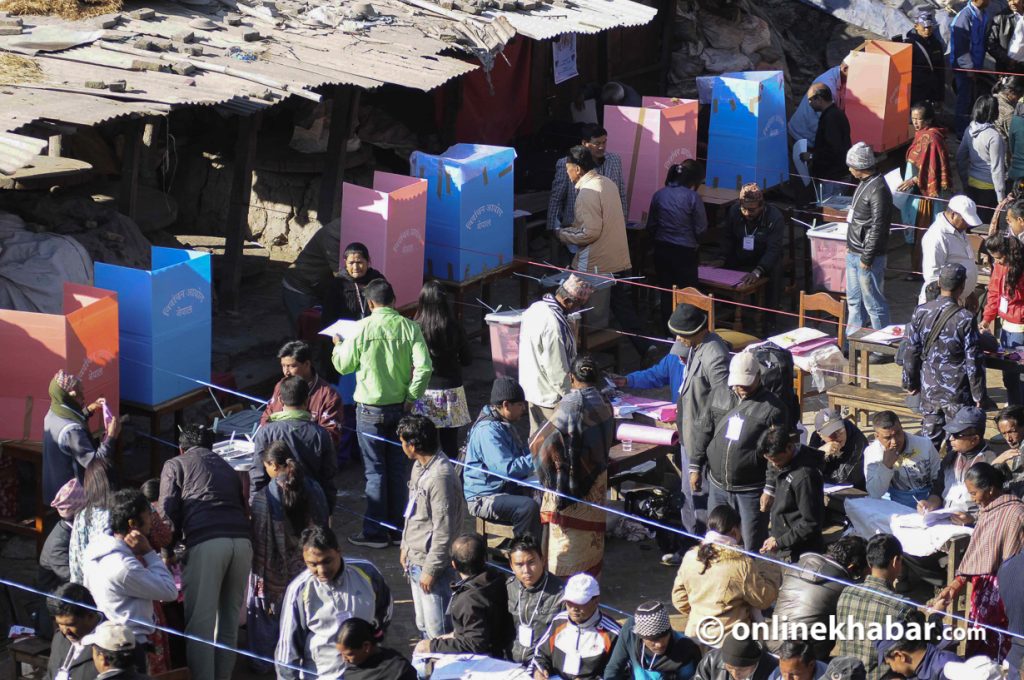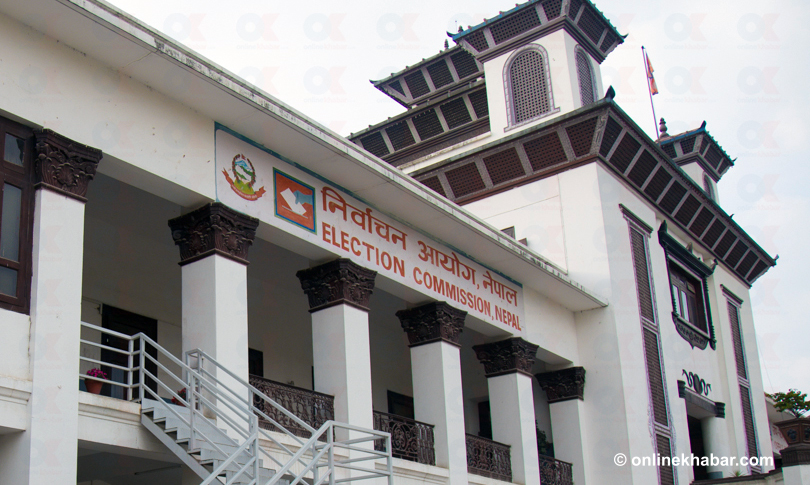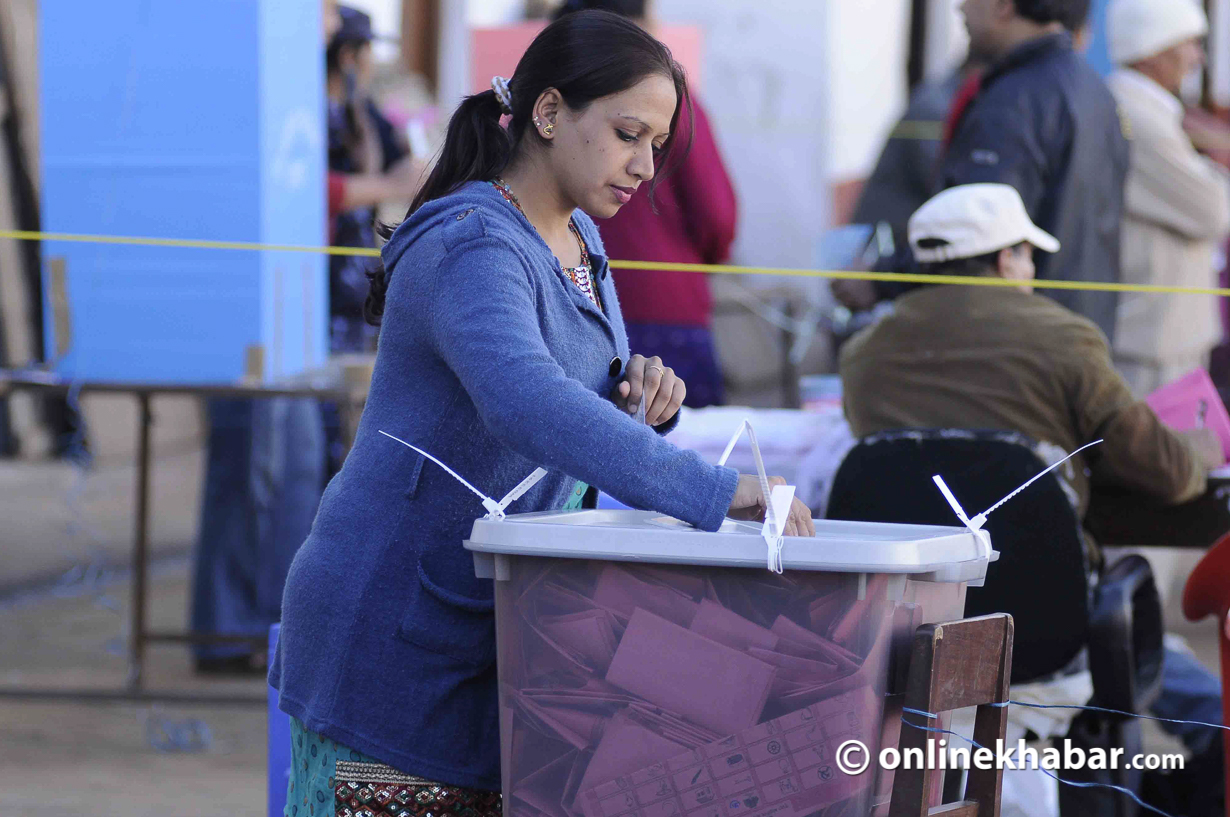Elections are always a centre for controversies with candidates badmouthing and accusing their opponents of various socially and even legally unacceptable activities. In the past elections, though not happy with the candidates, people had participated and voted for the enlisted candidates. And, it seems that in the local elections too, people will do the same. But, what if you had an option to vote yet not vote for any candidates. This option is known as the right to reject or none of the above or NOTA in voting.
But, is NOTA in voting important for the voters? And, does NOTA impact election results? Yes, it has been a viable option practised by many countries and it can be for Nepal too, after careful consideration. But no, NOTA in voting does not impact the election results, but it can be an indication of the need for change.
And, the more important question is whether Nepal is ready for it.
To find the answers, here are some pointers to consider that propel you to think it is indeed a time the country adopted the right to reject or NOTA in voting and why Nepal is lagging.

Why is the right to reject needed?
1. A fundamental right of speech and expression
Right to speech and expression is a concept that has been contested from many angles, in recent years. But, when it comes to voting, the very fundamental right to speech and expression has not been explored fully. It has only been debated in terms of one being free to cast their votes for the candidates free of fear, intimidation and biases.
But, what if one is not fully convinced about the listed candidates? Should not voters be free to reject the candidates and demand a new list of candidates? After all, that too accounts for their freedom of speech and expression. Hence, NOTA in voting can and should be an option.
2. Alternative to untrustworthy/ ineligible candidates
As mentioned before, in an election at any given time, there can be many candidates that you might feel are untrustworthy or ineligible. But, when you feel so, what do you do?
At that moment, NOTA in voting can be a way out. Rather than being restricted about choosing a candidate that one is not happy about, they rather choose for NOTA or invoke their right to reject them. In this sense, NOTA can be the right alternative for voters who are not convinced about the next possible leadership based on the listed candidates.
3. Time for a change
When there is the option to choose NOTA or the right to reject in an election and if more people are choosing to go with the option, this can be a good indication that there is a need for change in the way the country is holding elections or choosing the candidates.
If only a couple of voters invoke their right to reject, it can be a personal opinion. However, when given an option, and when a significant portion of people, say 20 per cent, are choosing NOTA, that means there is something significantly wrong with the way the country has been conducting elections. Such situations beg for the country to change its ways and either change the criteria of candidate selection.

Why not the right to reject in Nepal?
1. Lack of education
Though NOTA or the right to reject has been debated by thinkers and said to be necessary, it has not been implemented in Nepal. One of the key reasons behind it is the lack of education on the topic. If neither general people nor policymakers are aware of it, there is no chance of people demanding the need for their right to reject. Meanwhile, the legislators will also not make an effort to change the constitution or election act to include the option in one and all major as well as minor elections. People will continue to be stuck to voting for the enlisted ones only.
2. No alternatives explored
Though the right to reject or NOTA is an alternative option, there is no alternative to what happens if the NOTA is practised and the election gets more such votes than any other candidate. The country is first yet to discuss if it needs to include NOTA in its elections. So, it is far from discussing how to move forward. It will take years before Nepal actually gets the option and is enabled to practise it well.
As there are a few ways NOTA can be practised, the country further needs to explore what practice suits it the best. Whether the votes will affect the election system or not, what will happen to the votes if there are more NOTA votes and in the situation, what happens to the incumbent government.
3. Already unstable government
Nepal is already guilty of having an unstable government that has changed like the seasons. In recent years, it is yet to achieve the feat of having a stable elected government throughout its tenure. So if Nepal, in this situation, includes NOTA in its election system, the country will further fall into instability. When the election fails to choose a new government, and there is a need for re-election, the gap widens creating more instability.
The re-election also demands the use of more taxpayers’ money or government reserve. One election is already a costly affair, so conducting another will further add the economic burden on the nation, which will lead the nation to further instability.
Different ways of NOTA practice
Though the right to reject or NOTA is not practised here in Nepal, it is not a new concept. There are different ways of practice in NOTA and some are as follows:
1. Leaving ballot papers blank
Leaving ballot papers blank is mostly regarded as a statistical measure of a candidate’s unpopularity.
It can be argued that a form of it is already practised here with voters leaving ballot papers blank. But, it is not officially practised, nor its repercussions have been explored, so a lot is still up for debate.
When the majority of the people leave the ballot empty/vote for NOTA, ideally, the officials should consider it as an exercise of the right to reject and should reopen nominations so that the voters can get more candidates to choose from.
2. Right to reject (NOTA) as an option on the ballot paper
In this format, the right to reject (NOTA) is included as an option along with the candidate list on the official ballot paper. Having it as an option would prevent the circumstances where the voters would have to choose between worse candidates in favour of the reselection of new, probably more capable and favourable candidates.
NOTA ballots are accepted in countries Colombia, Ukraine, Brazil, Bangladesh, Bulgaria, Finland, Spain, Sweden, Chile, France, Belgium, and Greece. In a few situations, the United States authorises it as well.
3. Forming a NOTA party
Some organisations around the world have formed NOTA parties. A variation of that can be seen in Russia and Ukraine among others. In this format, when people do not vote for registered candidates, they get to choose from the NOTA candidates.

























